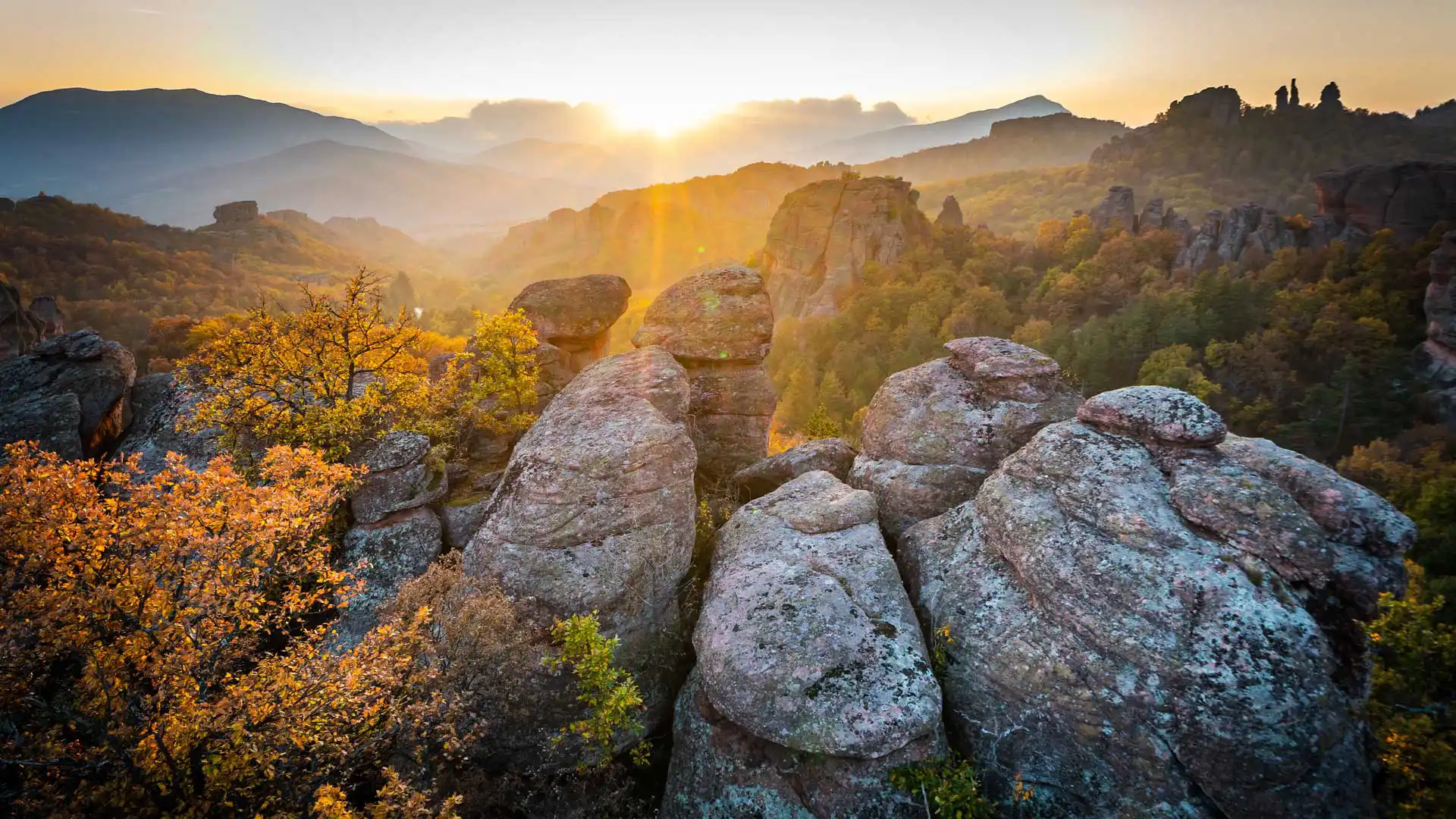贝洛格拉齐克石林,保加利亚 Belogradchik Rocks, Bulgaria (© EvaL Miko/Shutterstock)
贝洛格拉齐克石林,保加利亚 Belogradchik Rocks, Bulgaria (© EvaL Miko/Shutterstock)
刻在石头上 Set in stone
贝洛格拉齐克石林,保加利亚
在保加利亚巴尔干山脉西麓,贝洛格拉奇克石林如同一座天然画廊,每一块岩石都诉说着独特的故事。这些砂岩与石灰岩柱经过数百万年的风化与侵蚀,形成了千姿百态的奇特造型,当地人坚信其中有些轮廓酷似人物、动物,甚至完整的场景。因此,这些岩石也被赋予了富有想象力的名字,如"骑手岩"、"女学生岩"、"僧侣岩"等。在这片土地上,辨认岩石形状就像在玩一场大自然版的猜谜游戏,既有趣又充满惊喜。
这些岩石如今已被列入联合国教科文组织的世界遗产预备名单,绵延超过18英里,环绕着贝洛格拉奇克小镇。它们的色彩会随着光线变化,从深红到金黄,宛如一幅动态的自然画卷。历史也曾赋予它们实际用途——贝洛格拉奇克堡垒就是最好的例证。这座堡垒最早由罗马人修建,后来又被奥斯曼人加固,其结构巧妙地依托岩石作为天然屏障。毕竟,当山体已经筑起坚固防线,又何须再费力建墙?如今,游客们来到这里徒步、攀岩、拍照,探索那些奇形怪状的岩石。但他们往往带走的不只是照片,更是故事。贝洛格拉奇克石林不仅是地质构造,更是凝固在石头中的传说。
The Belogradchik Rocks in Bulgaria
In Bulgaria, on the western slopes of the Balkan Mountains, the Belogradchik Rocks stand like a natural gallery where every formation tells a tale. Shaped over millions of years by erosion, these sandstone and limestone pillars twist and tower into outlines that locals swear resemble people, animals, and even entire scenes. That's why names like 'The Horseman,' 'The Schoolgirl,' and 'The Monks' have stuck—it's a landscape where spotting shapes feels a bit like playing nature's version of charades.
The rocks, which are on UNESCO's Tentative List, stretch for more than 18 miles around the town of Belogradchik, their colors shifting from deep red to gold depending on the light. History found a use for them, too. The Belogradchik Fortress, first built by the Romans and later reinforced by Ottomans, leans on the rocks as natural defense. Why build walls when the mountain has already done the heavy lifting? Visitors today come to hike, climb, and photograph the unusual shapes, but they often leave with something extra: stories. The Belogradchik Rocks aren't just formations—they're legends frozen in stone.
